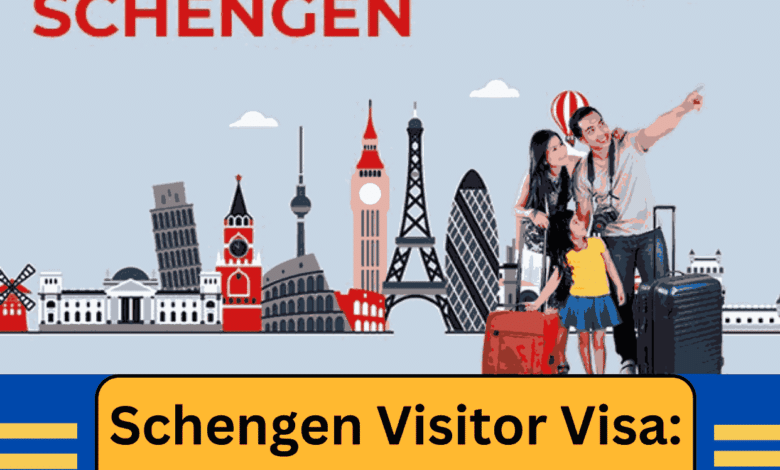Schengen Visitor Visa: Complete Guide

Schengen Visitor Visa: Complete Guide
Do you want to visit friends and family across Europe but stuck with the visa process. Getting Schengen Visitor Visa (Short Term Visa) will help you enjoy the comforts of your loved ones in order fashion. This complete guide will get you through your visa application. So get started with this amazing journey through the heart of Europe.
A Basic Overview
A Schengen Area consists of 26 European countries that have gotten rid of their ‘open borders’. This visa allows third-country nationals to visit and stay in the Schengen area for a short duration. That is 90 days so they can visit their family, friends and relatives. So if you belong to a country that requires a Schengen Zone visa, you can visit to see various cultures and historical landscapes which Europe offers.
Understanding the Eligibility Criteria for the Short Term Visa
An applicant has to hold a passport of a country that requires a visa to enter the Schengen area. This visa allows you to visit relatives, friends, or family members living in a Schengen country. Always, make sure to check for visa requirements as they are subject to change.
Required Documents for Schengen Visitor Visa Application

A Schengen visa allows you to travel across any 26 European countries that belong to the Schengen area. The application process is divided into simple steps. It also lists other documents you will have to arrange and sort out before you run out of time.
The list to apply for your Short Term Visa includes the following:
-
- Visa Application Form: Fully completed with honest information.
- Two Identical Photos: That meet the visa photo requirements.
- Valid Passport: Has at least two empty pages. Is good for three more months after you plan to leave the Schengen area.
- Letter of Invitation: Including a copy of their passport or residency permit.
- Round Trip Reservation: Your road in and out of the Schengen Area.
- Travel Insurance: With cover for migration, emergency medical treatment and/or urgent hospitalization. Which is valid for all of the territories and all of the Member States, with a minimum coverage of €30,000.00.
- Travel Itinerary: A simple but thorough letter explaining why you want to visit, how long you’ll be there, and where you’ll stay.
- Means of Subsistence: Account statements showing that you have enough money to support yourself financially during your stay.
- Proof of Accommodation: The details around where you’ll be staying during your visit.
- Proof of Employment Status: Information about your job or business and your reasons for returning home.
- Documents for Minors: If you or a child traveling with you must apply for a Schengen visa. This include a birth certificate, school letter, a permission letter. And passport copies if the minor is traveling alone or with only one parent.
Application Process for Schengen Visitor Visa
If you stick to the facts, the process is fairly simple.
-
- Check you’re eligible: Your nationality determines if you need a Schengen visa or not.
- Determine where to apply: This will be your single most important destination or, for multiple Schengen states, the country of first entry.
- Time your application: 3 months to 15 working days before you plan to travel is the window for applications.
- Complete the application form: Honestly and completely.
- Prepare your supporting documents: All of them and every one of them, current, and as specified.
- Schedule and Attend a Visa Interview: Your chance to make your case to the consulate or embassy.
- Pay the visa fee: Your actual fee may vary. Confirm with the embassy or consulate for their current visa rates. But it cost maybe 80€ to apply for Visitor Visa.
When to Apply for Visitor Visa?
It’s usually a 15-calendar day to wait for visa processing. However, in some cases, the processing time can be extended up to 60 days. The visa sticker on your passport will tell you the visa’s period of validity and the number of days you are allowed to stay in the Schengen Area.
Extending Your Short Term Visa
At times, you may find that you want to extend your stay within Europe, or within the Schengen Area. While visa extensions do become possible in strict cases. To strengthen your application, it’s crucial to base it on solid reasoning. Authorities can extend a visa for force majeure, humanitarian, or serious personal reasons.
Dealing with Visa Rejection
All is not lost just because your visa application has been rejected. You also have the right to reapply. Just make sure that when you reapply, you address everything that went wrong the first time.
In addition, if you believe that the visa decision on your application is unreasonable, you always have the right to appeal. You can send an Appeal Letter for Schengen Visa Refusal which is a brief letter outlining why you think that the decision should be overturned.
It is always advisable that you include in your letter anything resembling additional evidence or further explanation of your circumstances that you feel will support your case.
Read More on How To Abroad
Freelancer Visa in Germany: Everything you need to know
Indian Expats: Visa, Residency, and Work Permit in Germany
Want to study in Germany? How To Abroad can help you achieve your academic dreams.
